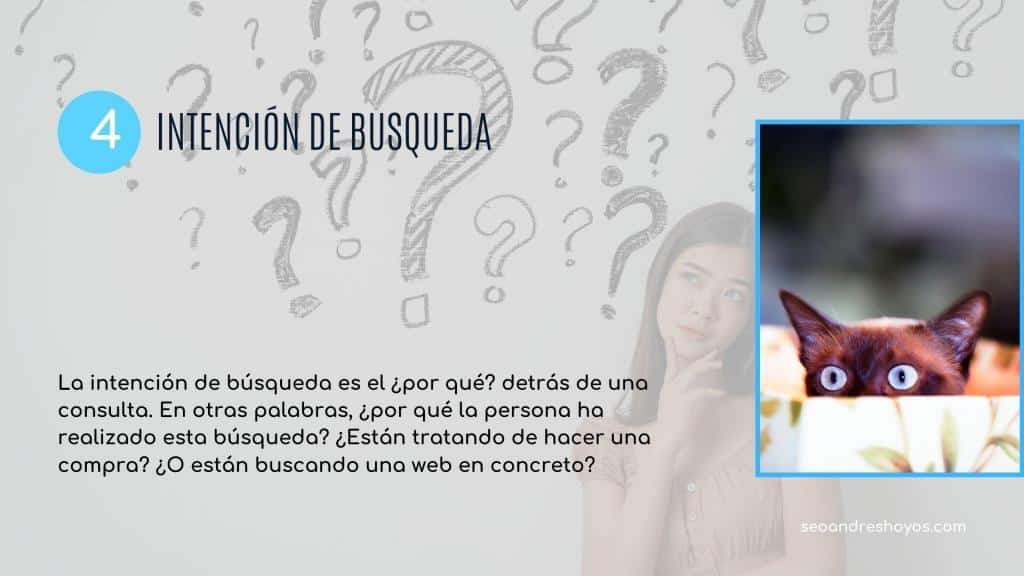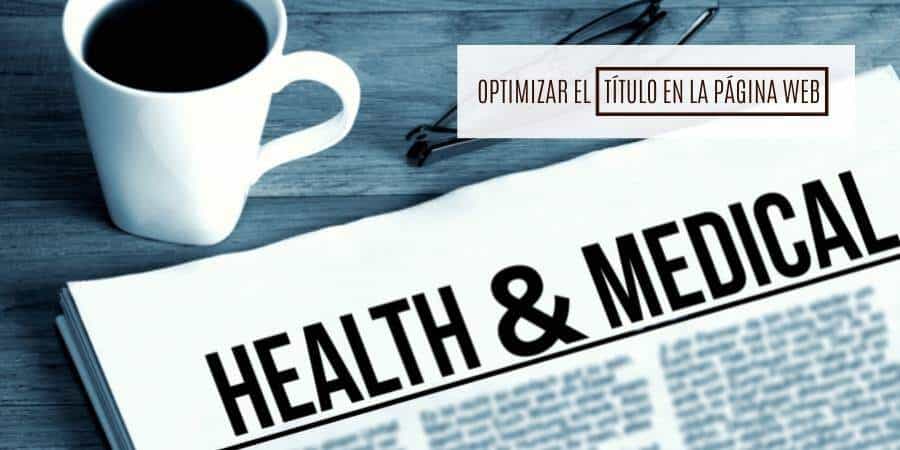- ¿Por qué el Seo On page es tan importante?
- ¿Sabes qué es el SEO On page?
- ¿Cómo determinar los factores SEO On Page más importantes para el 2023?
- 1. Las actualizaciones más importantes del algoritmo de Google los últimos años
- 2. Entender e identificar Los 3 Core Web Vitals más importante para el Seo on page
- 3. Identificar y crear con base al Customer Persona (Perfiles de nuestros clientes)
- 4. Identificar la intención de búsqueda de los potenciales visitantes a la web
- 5. La Legibilidad o fácil lectura de tus artículos como factor SEO determinante
- 6. UX (experiencia del usuario) factor Seo on Page
- 7. Arquitectura de tu sitio web y enlazado interno
- Conclusión factores SEO Onpage 2023
Why is On-Page SEO so important?
Nowadays, the majority of companies worldwide have at least one website. That’s why I’ve decided to share with you today how to identify the most important on-page SEO factors for 2023.
If by chance you are just starting in the SEO world and wondering what Web positioning is, I’ll tell you that this article is at an intermediate level. So, if you find it a bit complex, I recommend you take a look at my free beginner’s SEO course.
Getting a bit into the subject and to give you some context about the relevance of this topic, I will tell you about some Google data that will make you work on the On-Page SEO of your website.
- 7 out of 10 online experiences begin on the Google search engine, to be specific, 68% (BrightEdge).
- 0.78% of searches click on the second page of search engine results, according to Backlinko.
- SEO generates 10 times more organic traffic than social media (BrightEdge).
- Only 6% of the pages rank in the top 10 with their keywords after a year of work.
- The contacts on a website obtained through SEO have a 14.6% chance of becoming a customer (HubSpot).
With this data, and in order to continue and identify the determining factors of on-page SEO for 2023, we must first answer the following question.
Do you know what SEO On-page is?
On Page SEO: These are all the elements and improvements I should consider making on my website with the aim of appearing in searches and improving positions in SERPs, mainly taking into account what ranks best for different search engines according to their algorithm.
On-page SEO is one of the two main divisions of SEO techniques and it encompasses a wide range of improvement methods and strategies that can only be done within my website.
Concepts to understand on-page SEO.
1. Readability
To put it simply, readability is the ease of understanding your text or content for your customer, how easy it is to read according to my customer or visitors to my website.
2. Usability
These are all the factors that make your site, blog, and content effective when it comes to achieving its ultimate goal. The main elements that we must consider to improve the usability of our site are:
- Load times should be fast and bounce rate reduced.
- Improve and create strategies to increase dwell time.
- Clear calls to action that align with the goal to generate interaction and conversions.
- Offer valuable and unique content to website visitors.
3. SEO Html
All elements and improvements from the HTML code for SEO, which is often confused with On Page SEO.
SEO Html is not SEO On Page, it is one of the current elements that belong to this.
This is where you find improvements and optimizations in your meta titles, meta descriptions, H1, H2, H3, paragraphs, Alt tags, images, website ratio, among others.
These 3 are just some of the elements that are part of On-Page SEO and are key concepts to understand and unravel SEO factors in 2023.
How to determine the most important On-Page SEO factors for 2023?

First of all, in order to identify the decisive On Page SEO factors for 2023, we must take into account and analyze where the main changes in Google’s algorithm occurred.
Since this is a broad, technical, profound, tough, and boring topic 😅, I will leave it as a complete subject for another blog where I will analyze each of the changes in Google’s algorithm during 2021.
But for now, I can assure you that by delving into this article, you will quickly realize what the change is about and where the evolution of SEO positioning factors is heading from now on.
1. The most important updates to Google’s algorithm in recent years.
While Google is not very specific about the updates and the effects and consequences they will bring to different websites, it is always important to take them into account and be aware of the changes at all times. Constantly monitoring site rankings is also crucial.
1. Actualización de reseña de producto (April)
As announced by Google, the aim of this update was to reward online reviews of products or services that have been conducted with thorough analysis and research, granting them top positions in search results.
2. Google Core Update (June)
This update also modifies the search algorithms and gives better positioning to websites that offer a superior user experience.
- Does the content provide information, reports, research, or original analysis?
- Is this content written by an expert who knows the topic well? (In this sense, it is very important to have author profiles activated for our content).
3. Spam Updates (July)
This update aims to combat spammy content in search results. Google has developed its own artificial intelligence, and with it, has managed to reduce by 80% the number of sites with copied or automatically generated content compared to previous years.
4. Page Experience Update (August)
This update, like the set of updates in 2021, also aims to improve the user experience on the web and is based on Core Web Vitals. These will be taken into account along with other search ranking factors, and thus, will be essential for any SEO strategy.
5. Titles in search results
Google ensures that, for 80% of search results, HTML title tags are still the primary way titles are generated in Google’s SERPs.
2. Understand and identify the 3 most important Core Web Vitals for on-page SEO.
They are a set of Google measurements that help assess the quality of an internet user’s browsing on a specific website.
LCP (Largest Contentful Paint)
The LCP (Largest Contentful Paint) metric of Core Web Vitals refers to the time it takes for a web page to load its content, whether it’s an image, a video, or a block of text.
FID (First Input Delay)
The Core Web Vitals FID (First Input Delay) indicator refers to the time that elapses from the first request made to the server and the moment a user starts interacting with the website, whether it’s by clicking or filling out a form.
CLS (Cumulative Layout Shift)
The CLS (Cumulative Layout Shift) metric of Core Web Vitals measures visual stability, that is, how much the layout of the web page has changed while it was loading.
3. Identify and create based on the Customer Persona (Profiles of our customers)
Based on the customer’s profile, it is important to understand and identify their search intent, preferences, and interests. This is done in order to determine the content that they consume and search for the most through Google.
Think about your customer and not about Google.
This may seem obvious and, ultimately, is what Google wants, now understanding that Google’s algorithms are designed as a neural network (A neural network is a simplified model that emulates the way the human brain works). The more time passes, the more data it has, the more it learns, and in itself, it becomes increasingly human, which can lead to the conclusion that it better understands our blogs like a real person.
Create a blog with your customer persona in mind.
Creating your own blog is an excellent way to boost your website’s SEO and attract quality visitors.
With On Page SEO, you can give greater value to your website, taking into account that search engines love valuable content and constant updates. If they see this, rest assured that they will index you quickly, improving the positioning of your brand.
Publishing content is a good strategy, doing it on your own website will bring greater benefits.
4. Identify the search intent of potential website visitors.
The search intent is the "why" behind a query.
In other words, why has the person conducted this search? Are they trying to make a purchase, or are they searching for a specific website?
Many times, what you type into the search engine is not exactly what you want or desire to find. However, it’s the way you explain it to Google, as it wants to understand what you ultimately want to find beyond the keyword you enter in the search engine.
5. Readability or easy reading of your articles as a determining SEO factor
The quality, response, and ease of reading a text depend on the complexity of the sentences and the selected vocabulary, but the structural design of the texts also influences readability.
1. Optimize the SEO title and meta description of your website.
The description is what your potential customers or visitors will see in the search engine below the title. It will be a brief description of the content you have for them on that specific page.
This is where you need to convince them that your website has the information they are asking for in the search engine; in short, it is the organic advertisement they will see of your website.
The meta description should contain between 70 and 160 characters, including spaces. Make sure to stay within this range.
How should a title and SEO description be?
- It be concrete and specific.
- Call to action.
- You must have the most important keywords.
- The title should be unique for each page on your website.
- It must be directly related to the content they lead to.
2. Optimize the visible title of your website.
The first thing you should know is that each specific section or page of your entire website has a main title. This is what different internet search engines (Google, Yahoo, Bing, Yandex…) use to index and categorize your site, as well as display it to their users.
It’s important to strategically use your target keyword matrix or keyword research, as it’s commonly called in English, in the titles of your website and in your strategy to optimize the different On Page SEO factors.
Titles are what help users decide whether or not to enter your website. It’s important for the webpage title to have between 10 and 70 characters, including spaces. Make sure it is descriptive and contains the most important keywords. Additionally, ensure that each page has its own unique title.
3. Optimize and organize your titles with their respective HTML tags h1, h2, h3.
While it is similar to the title of your webpage, it should be differentiated because it is the most visible text for your visitors. It is also the most visible heading within your page for users who entered and found your content. For this reason, it is important to use keywords in the header with the h1 tag.
Keep in mind that it is not good for the ranking of your website to duplicate the content and the h1 tag mentioned in the first point.
Newbees advice: Try to use only one H1 per page on your website.
4. Keyword analysis and selection of keywords for each section.
They are those words or set of words that your users will use to search for information they need in search engines; the correct selection of these and the number of times users use them will give you a greater likelihood of obtaining a result.
For this, you can use tools available on the Internet, we recommend that you use the Google Ads keyword tool.
If you’re not sure or don’t have enough experience with this tool, I’ll give you the following recommendations:
- Ask your customers how they would search for you on the internet if they ever need any of your products and/or services.
- Select the top 10 most frequent.
- Try them out on different search engines and identify if they provide information related to that category of products.
- Make sure that your content, titles, and descriptions use these keywords on each of your website pages.
For example, you will notice that in the different paragraphs of this post, we always try to use the term “web page” in its entirety, instead of just “page” or “site” without the word web. This is because, upon verifying through the AdWords tool, our potential customers or readers (you) frequently and in greater quantity use “page” and “web”, while some use others like portal and site, but “web page” is used much more frequently.
5. Improve Alt attributes on images with your keywords.
These are very important attributes to consider when building your website. Keep in mind that these are some of the on-page SEO factors that will give your article or content greater semantic breadth and greatly improve your website’s rankings.
Optizing Alt and Title tags is important because search engine robots or crawlers cannot see what is in images, so the alternative text attribute (Alt) allows you to assign a specific description to each image.
In the alternative text, it is important to describe your images so that they can appear in the search results of Google Images. Ensure that the descriptions in your Alt text do not exceed 150 characters including spaces, and minimize the size of the images to optimize the loading time of your website.
6. The “Ratio” of your Web page [More content, less code].
The ratio in a nutshell is the texts or content of your webpage, which include your entire list of keywords in comparison to the amount of code.
That is to say, if your webpage has a lot of code and very little content, Google probably won’t like it much since it prefers pages filled with information. Keep in mind that search engines value your content and in great quantity.
On the Internet, you can find many Ratio meters, but we prefer Wokomedia’s. The value it provides is the percentage of your website’s Ratio, which should be between 25% and 70%. Anything outside of these limits may be deemed by search engines as a poorly constructed or spammy page.
What you can do is make sure that all sections of your site have relevant content using your keywords. You can also include a blog with articles or information related to your products and services.
7. XML Sitemap and Robots.txt File Map
A sitemap lists the URLs that can be crawled and may include additional information, such as the latest updates to the website, frequency of changes, and URL importance. This allows search engines to crawl the website more comprehensively. It is also considered a best practice to specify the location of your sitemap in your robots.txt file.
6. UX (User Experience) Seo on Page factor
Lastly, but less importantly, even your website may never be considered by search engine robots for ranking, as your page takes too long to load when a user accesses it. For this matter, there are certain actions that are recommended and there are many that you can do, but here we will mention the most important ones to check and consider.
- The weight of the images on your page.
- Ensure that the server has the Gzip function enabled and active for your site.
- Verify that your site is using a module for cache management and code optimization.
Remember that for Google, the minimum loading time for your website is 2.7 seconds. Tough, right? Especially if you didn’t develop your site from scratch, have it on WordPress, and bought a template. 🙁
7. Architecture of your website and internal linking
In Interlinking or internal linking, it is important to understand that links pass value from one page to another, but the quantity or value that can be passed is divided among all the links on a page.
It also improves the pathways within your website so that robots can crawl your site completely.
If you have an excessive number of unnecessary links on your website, this significantly diminishes the value of your links and therefore of your webpage.
While there is no defined limit on the number of links that should be included on a page, it is best to the number of links to 200 per page.
Using the Nofollow attribute prevents links from passing value to other pages, but it is interesting to note that these links are always factored into the equation when calculating the value passed through each link. Therefore, Nofollow links can also dilute the PageRank.
Conclusion: Onpage SEO factors 2023
Finally, if you want to rank your website in the top positions of search engines and obtain organic traffic that allows the sustainability of your project and generates a good return on investment, you should always seek advice from experienced SEO experts or agencies and properly implement the on-page SEO factors.




























